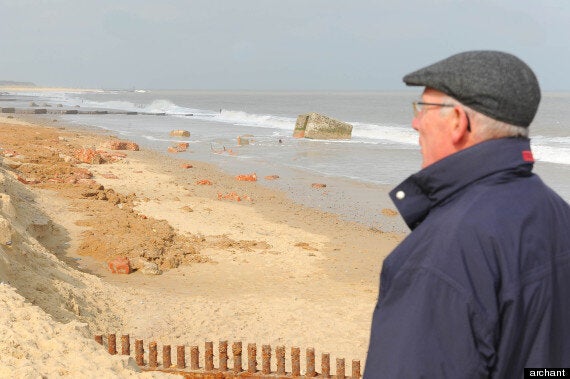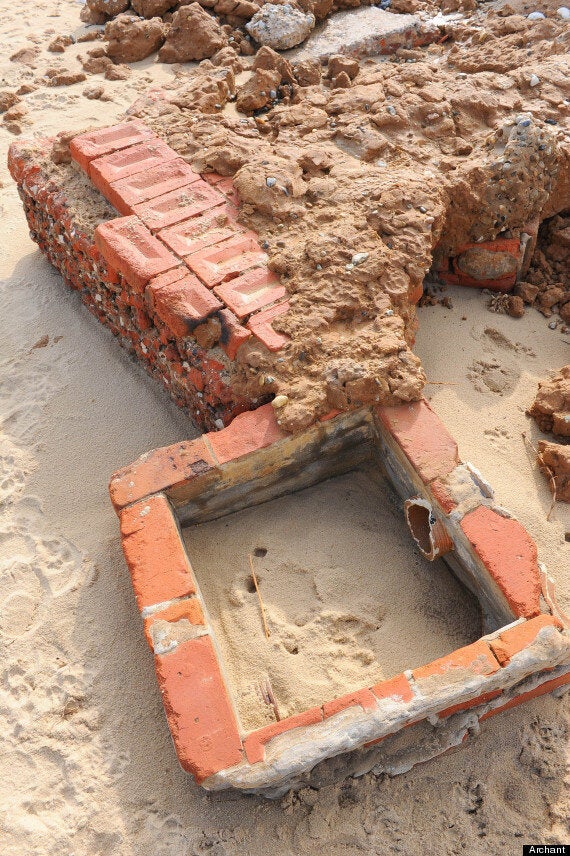Emerging from the sands like a Phoenix from the ashes, the skeleton of a magnificent seaside hotel abandoned in the Second World War after falling victim to coastal erosion has begun to make a dramatic reappearance.
The Manor House Hotel, like a ghost from the wartime past, is now visible again on the beach at Caister, near Great Yarmouth, Norfolk, after a staggering 65 years.
The imposing Georgian building crumbled into the mists of history after decades of the east coast being battered by raging seas and violent gales.

The Manor House Hotel near Great Yarmouth, Norfolk
But after a night of raw north-easterly winds last week, and as a result, military pillboxes, the metalwork of Dutch groynes and even bedrock was exposed along Norfolk’s North Sea coast.
Tony Overill, chairman of Caister Parish Council, said: “It’s a phenomenon on this coast that whenever we get a strong north-easter it will scour the beach away.
“It’s a continuing battle between the sea and the land.”
Red bricks and internal piping of the old Manor House Hotel now litter the popular holiday spot after huge mountains of sand were swept away at the beach by Manor Road.
The Manor House is believed to have been built way back in 1793, four years after the French Revolution erupted with King George 111 on the throne.

The old red bricks of the wartime hotel on the Norfolk beach
It was converted to a hotel in 1894 and then extended to have 36 bedrooms in the 1920s as more people headed to enjoy the seaside after the Great War.
But the Manor House was abandoned in about 1941, at the height of World War Two, as the shoreline was destroyed by environmental erosion.
Overill, 74, said he recalled pushing his bike along near to the derelict hotel as a child and believes it completely disappeared from view in 1948.
“It just seemed to crumble away,” he said.
“What you’re getting now is things reappearing from Hopton to Happisburgh.”
Last month oil believed to be from the stricken Eleni V tanker disaster in 1978 resurfaced at Hopton beach.


Military pillboxes, the metalwork of Dutch groynes and even bedrock have been exposed
And concrete pillboxes built to repel a feared Nazi invasion in the last war are now totally exposed at Hemsby and Hopton.
Locals recall being able to drive a Jeep over the top of them just over a year ago, but now they stand some 10ft above the beach.
“It’s bad, I know it’s bad, but it’s something we’ve lived with for centuries on this coast,” said Overill.
“That will all come back in two or three weeks.
“For the last three weeks, at least, the winds have been continuing to come in, and that’s when you get scouring.”
The veteran councillor said a massive amount of sand had disappeared, which was worrying with the tourist season looming.
“They will have to get the bulldozer out to take it away from the lifeboat shed,” said Cllr Overill.